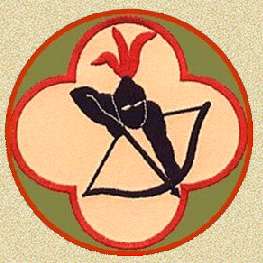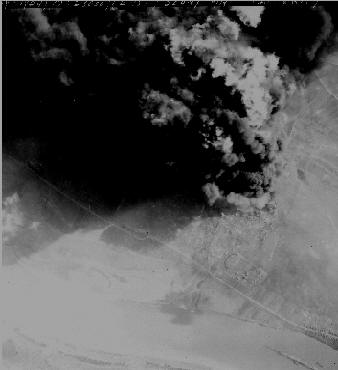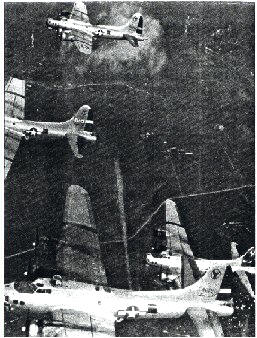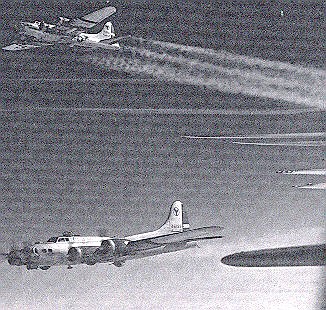
2nd Bomb Group
United States Army Air Forces during WWII in Italy
Split Arrow

429th Tail Mark
 |
429th Bomb Squadron 2nd Bomb Group United States Army Air Forces during WWII in Italy |
|
Split Arrow
429th Tail Mark |
|
| The 429th Bomb Squadron was activated 1 February 1940 as the 41st Squadron (Heavy); 429th Bombardment Squadron (Heavy) on 22 April 1942. On 29th Oct. 1942 the 429th became a part of the 2nd Bomb Group with the 20th, 49th, and 96th Squadron. The four squadrons trained at bases in the state of Montana until 13th of March 1943. All four squadrons arrived in Algeria in March 1943, in Tunisia August 1, 1943 and finally to Foggia, Italy at Amendola Air Base in December 10, 1943. | |
| Szony, Hungary, Oil Refinery March 14, 1945. I was on this mission and it was surprising how fast the smoke came up around our formation at 31,000 ft. even before we left the bomb run. Operations order for this mission was indicative how fluid the ground campaign in Hungary and Yugoslavia had become. There were no bomb zones, zones where only assigned targets could be attacked, and then only after positive identification had been made. |
 |
| Bombs were no longer to be jettisoned over
Yugoslavia. This was the Group's
first mission to Szony and it dispatched
44 planes in two waves 41 planes reached the target. One 20th Squadron plane
was lost.
|
|
|
429th Squadron in formation after taking off from Amendola Air Field in Foggia, Italy on the way to Southern Germany!!!!!! Picture Courtesy Lt. Specker, 429th Navigator. |

|
|
A tight but ill-fated formation of 429th airplanes. No.682 (top) with Dale E. Gold crew, downed by flak (picture from Defenders of Liberty) over Vienna February 2, 1945; No 198 (bottom), Lt Robert P. Trowbridge crew, downed over Vienna February 21, 1945. No. 542 with Lt. Walter B. Cope's crew was forced by flak to make an emergency landing in friendly Yugoslav territory on April 1, 1945 after bombing the railroad bridge at Maribor, Yugoslavia. The 429th was the only squadron to drop their bombs on this mission due to cloud cover. |
 |
|
The others returned to Amendola. I was on this mission and what we thought might be a milk run turned out to be hell! Lt. Richard S. Woods CP on another plane was killed by flak. Lt. Cope's crew were raked by flak over the target and engines 1,3 and 4 were knocked out but managed to stay aloft the 50 odd minutes it took to reach friendly territory. Lt. Cope was wounded along with three other. They were returned later by C-47. |
|
|
Ray Specker's Visit with the Russians
| |
 |
Mission 362 February 21 1945 Vienna, Austria Central Yards and Shops Twenty-six Group airplane joined in this attack by the 15th Air Force and added their 163 tons of Bombs to the raid. The results were good. Two men were wounded and two airplanes were lost to flak. planes #44-6689, Pilot 1st Lt. Eugene F. Bull, 429th Squadron, received a burst of flak between #3 and #4 engines while on the bomb run. Lt. Bull's left shoulder was injured in the flak hit leaving it numb. |
|
Copilot Harold E. Frazer took over feathering the two engines and sliding to the left took up a new heading from Lt. John R. Specker, Navigator, to Kecsekemet Airdrome, Hungary. Lt. Bull sent Sgt Lewis E. Fifield back to check on the crew. Bull was the only injury. 4 Me-109 then attacked the plane and Lt. Bull told Sgt. Fifield to tell all the enlisted men to bail out. Then Bull, Frazer, Specker and Krejsa bailed out. They were strafed by the German fighters and shot at from the ground. Lt. Specker was wounded in the thigh. Unable to walk he lay on the ground near some bushes for an hour or so before being picked up by Russian patrol. The four officers eventually came together at a Russian colonel's house. Specker's wounds were treated by Russian doctors. Full Story in "Defenders of Liberty" |
|
|
Forward to 429th Squadron People
|
|